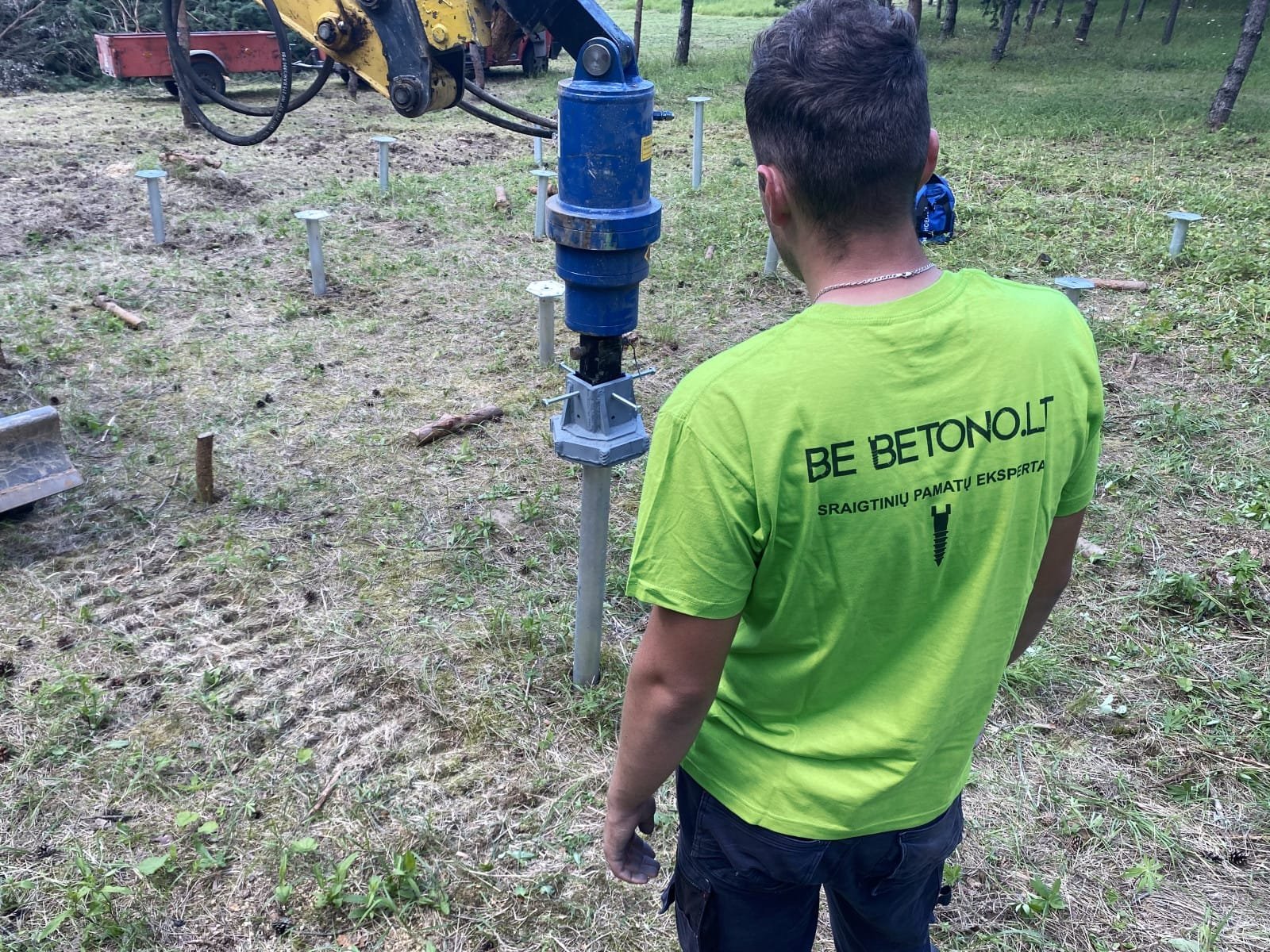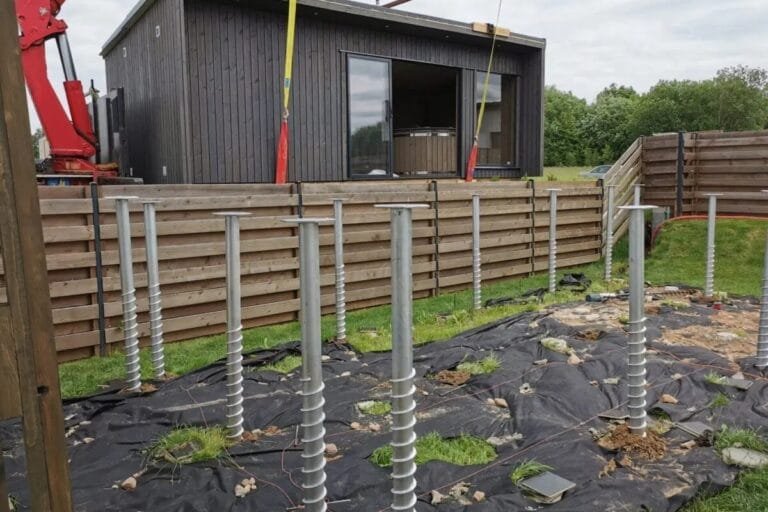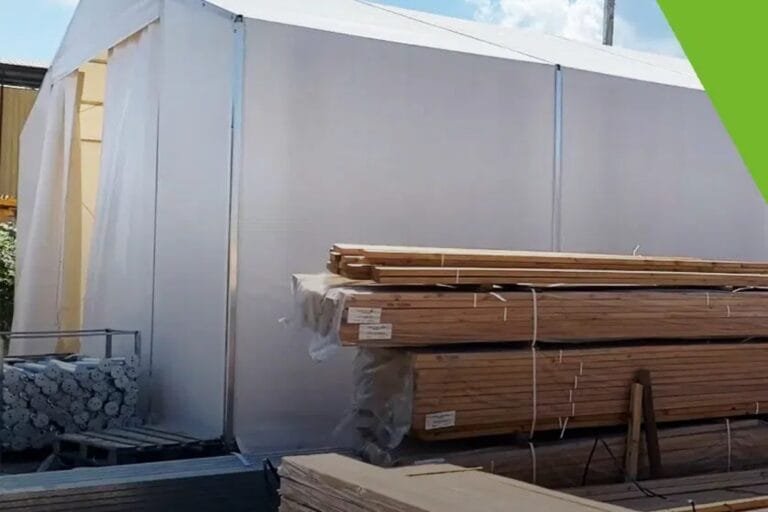🚚 Free shipping from 295 EUR
What should We Know about Screw Piles?

What should we know about screw piles? It’s a fast-growing, cost-effective way to build foundations in Lithuania and worldwide. Yes, it’s surrounded by myths and doubts about reliability and longevity. But once you look at the technology and objectively assess installation conditions, it’s clearly a modern, efficient, and robust solution. While this foundation method isn’t suitable for apartment buildings, it’s ideal for small architectural structures—like terraces, sheds, carports, timber or log cabins, fences, and similar. Screw piles are also commonly chosen for foundations in water—piers, docks, and footbridges.
This foundation method stands out for its efficiency—when installing screw piles, there’s no need to dig, and the work goes much faster. And once the foundations are in, you don’t have to worry about cleanup—screw piles leave no waste behind.
How Screw Piles Work
First, the working principle of screw piles—they work like a wood screw. The chosen pile is installed by screwing it in. It moves down while compacting the soil, which is why the screw foundation locks firmly into the ground and won’t budge. With screw piles, you can forget soil stabilization—you can screw piles into almost any soil without extra reinforcement. The helical thread helps prevent settlement. Vertical load across the whole area is distributed over three layers—the lower and upper frames, and the decking boards mounted on top.
Of course, you always need to consider what you’re screwing into. The weaker the soil, the higher the risk of foundation settlement. If the terrace isn’t elevated, shorter piles will do, but if the soil is looser (for example, fill, sand, or gravel), choose longer ones—starting from 1085 mm.
What Loads Can Screw Piles Handle?
Speaking of terrace loads, which are usually 15–20 kg/m² with pine and 20–25 kg/m² with larch—the piles can easily handle that weight. Typically, screw foundations withstand a vertical load of 400–800 kg. As the pile is screwed into the ground, friction forces act on it and, thanks to the continuous helix, there are many bearing points. Because of that same helix, it takes a lot of force to push a screw foundation deeper and overcome all support points. Under compression, the screw wants to turn, but since it’s connected to the structure, it can’t. That’s why a screw foundation can carry high loads without being very massive—unlike concrete, where more area is engaged by friction and the base must bear on the hardest soil below due to its own weight. Screw piles are made from S235 steel, with wall thickness of 1.8–3.5 mm, hot-dip galvanized to 60–80 µm according to EU standard EN ISO 1461, and they guarantee a service life of 25–30 years.
An Efficient, Cost-Effective Way to Build Foundations
One of the main advantages of installing screw piles or building a terrace on screw foundations is that you can continue construction the same day—no waiting—unlike concrete foundations. This is especially valuable in the cold season, when curing times get much longer and project timelines drag out. However, a common belief is that screw foundations won’t withstand Lithuanian winters and frost will lift the piles.
Seasonality and its Impact on Screw Pile Installation
In Lithuania, seasonal frost affects the entire country—it can start as early as October and last until early May. When temperatures drop below zero, moist soil freezes; water turning into ice expands by about 10% and forces the soil to expand. In winter, the soil tends to push foundations out of the ground, and conversely—pull them down in spring as the ice melts.
Soil Characteristics
Soil freezes deepest in northern and eastern Lithuania, and in the Sudovian Highlands, where winter air temperatures are lowest, sandy soils are dry, and groundwater lies deep. On average, the ground freezes 20–30 cm in winter, but in some years, depending on heat exchange between soil and atmosphere, frost depth can differ greatly from the long-term average. Sand can freeze deeper—up to 1.20 m, while clay or loam can reach up to 1.50 m. An interesting fact—the greatest soil frost depth measured in Lithuania was in Dusetos in 1966, reaching 146 cm.
Cold Winter Trends in Lithuania
Looking at recent winter weather trends, we clearly see cold winters getting shorter and the ground not freezing as deep. More specifically—analyzing data from December to February in 2017–2020—the deepest frost occurred in northern and southern Lithuania in 2018 and ranged between 20–41 cm. In 2017, the deepest frost was recorded in Varėna district at 6–12 cm, while in other regions it was only 1–4 cm. In 2018, frost depths of 10–17 cm were recorded nationwide, and in 2019 and 2020 most districts saw frost depths of 8–16 cm.
Be Betono’S Experience
We’re terrace specialists and have worked on countless projects. So far, we haven’t seen foundations—neither concrete nor screw—heave due to frost when they’re installed correctly, meaning soil properties, clearance from the ground to the structure, and loads are properly considered. So the best approach is to follow best practices, rely on experience and recent meteorological data, and note that LRS STR states—set foundation depth for light structures at 800–1200 mm.



